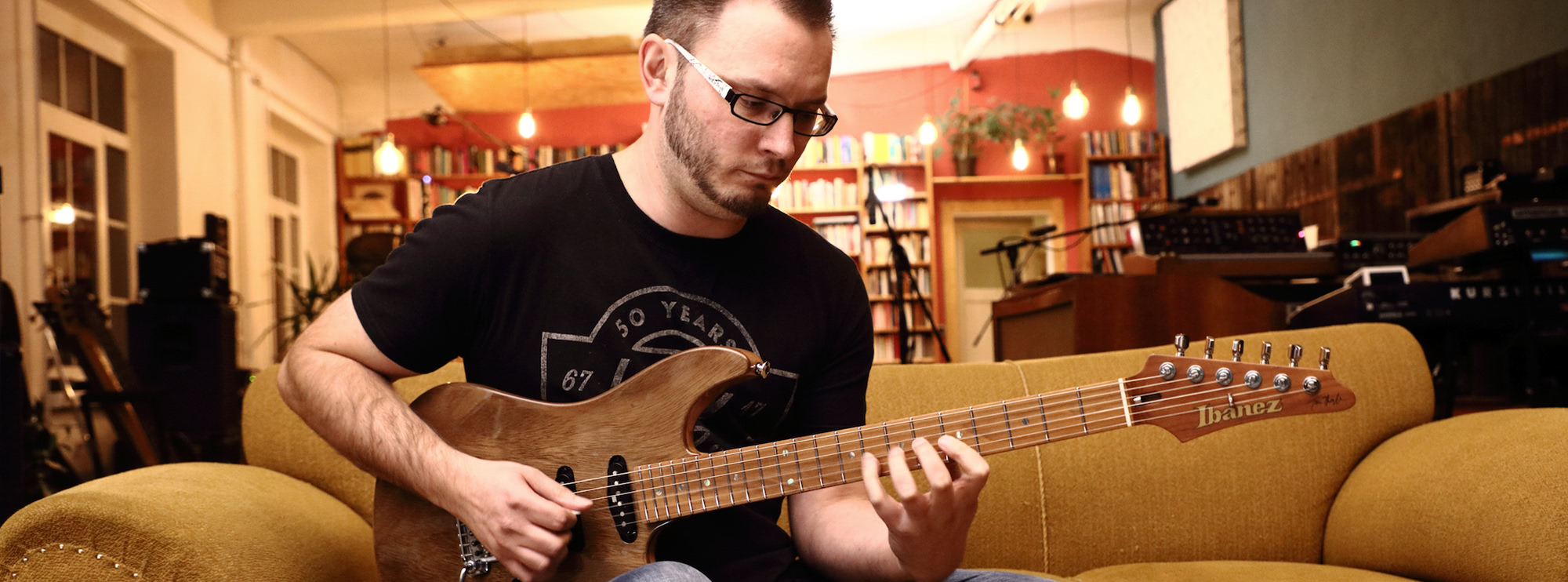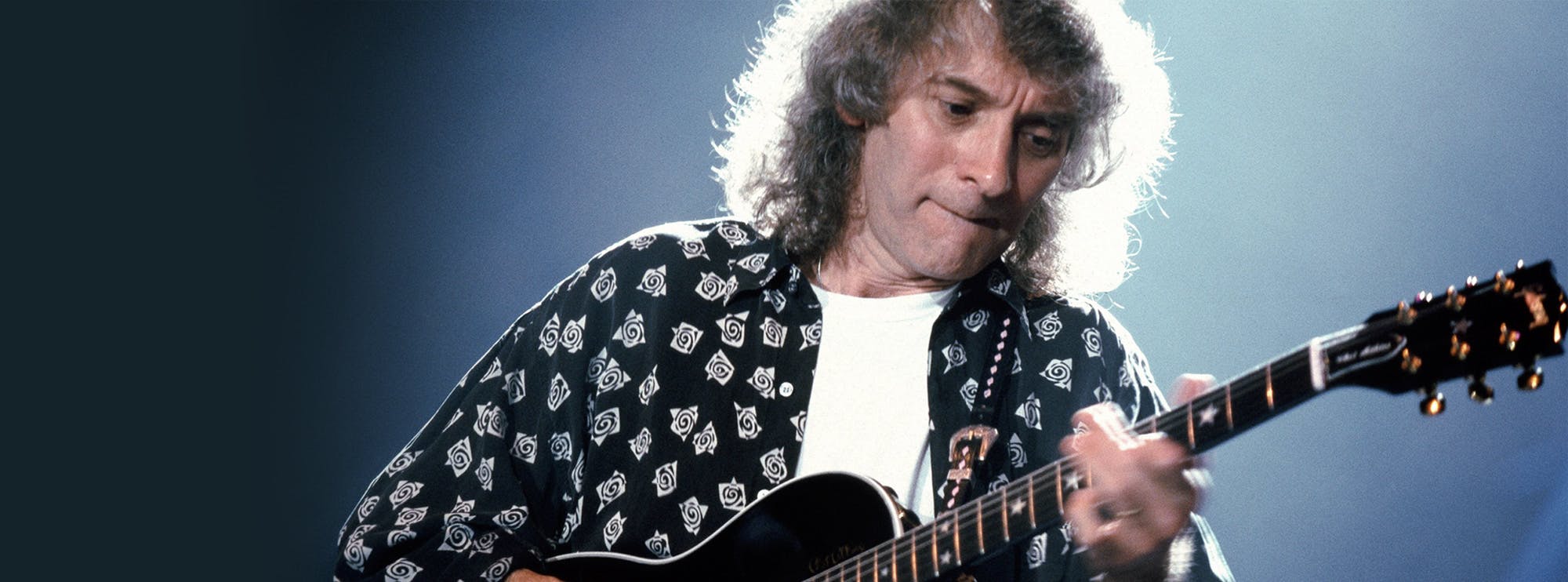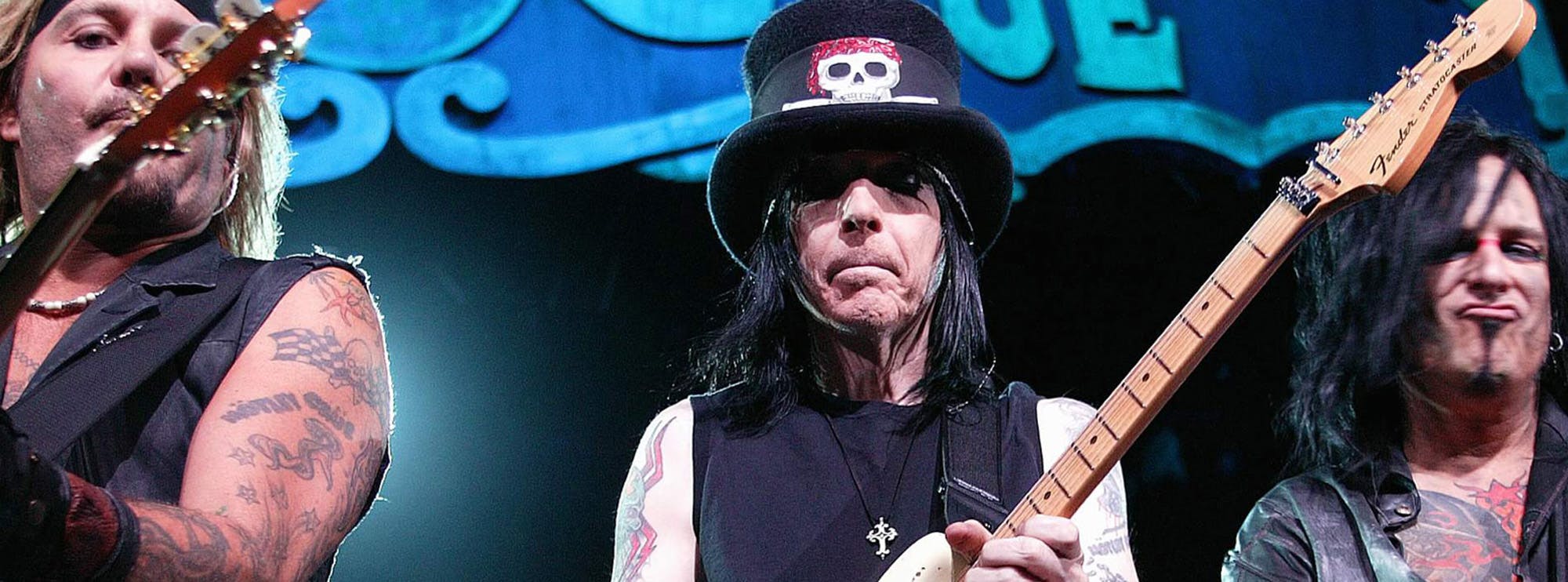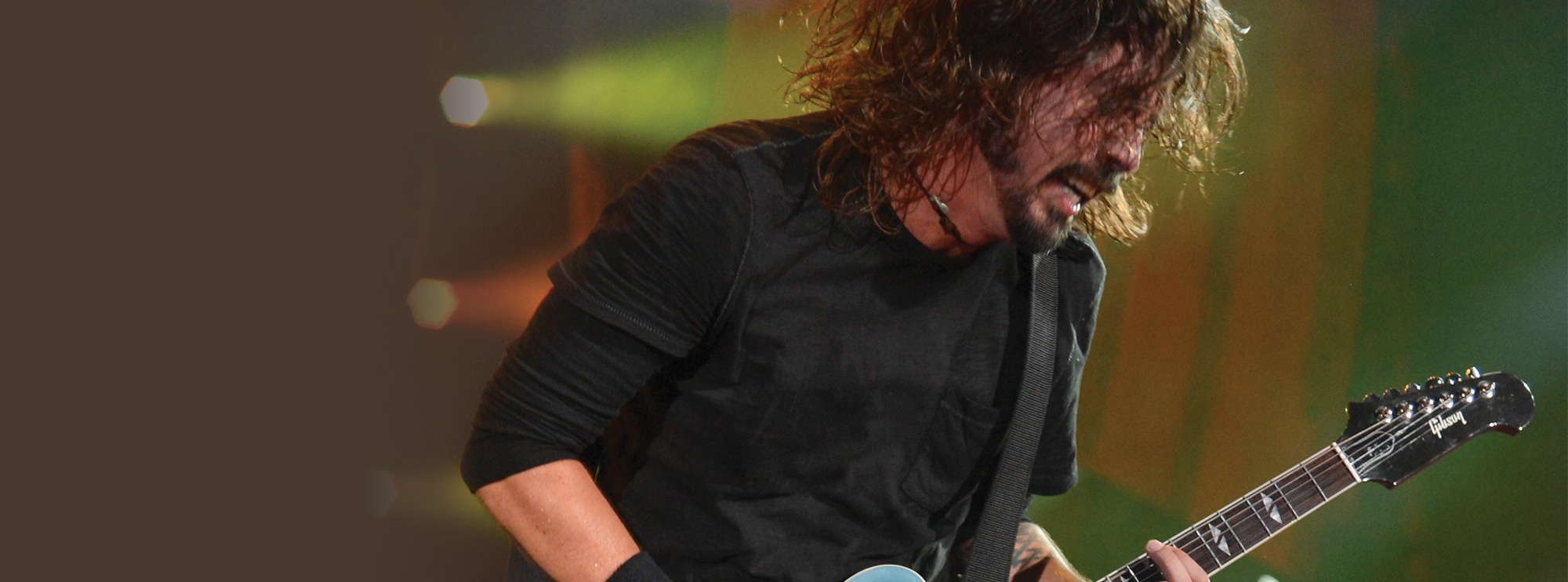It's cliché, but where do you begin to start writing a tribute to Eddie Van Halen? The most impactful electric guitar player of the past 40 years—arguably filling even more column inches than even Hendrix. Eddie was a one of a kind, a master of his art, but more than that he was an innovator. Nick Jennison explores the incredible intricacies of Van Halen's elusive an in many ways incomparable guitar style. In the entire history of rock guitar, there have only been two players to revolutionise the way we play the guitar overnight. The first was Hendrix. The other was the now sadly departed Edward Van Halen. Van Halen's eponymous 1978's debut was an absolute tour de force of tone, groove and next-level technical innovation that remains unsurpassed in terms of sheer impact on the guitar community. It's also (in our opinion) probably the strongest start-to-finish debut album a rock band has ever produced, perhaps rivalled only by GNR's 'Appetite For Destruction.'
When guitar players first heard "Eruption", its swirling cascade of tapped arpeggios boggled minds. We take this kind of technique for granted these days, but at the time it was utterly groundbreaking - so much so that many refused to believe that such a sound could come from a guitar. Of course, it's easy for the uninitiated to pigeonhole EVH as "the tapping guy", but there's so much more that we have to thank Ed for. Here's a short - but by no means exhaustive - list.
Humbuckers in strat-shaped guitars.
Locking tremolo systems.
High gain amplifiers.
Reverb and delay as "must-have" effects for solos.
Heavy guitar in pop music.
Pop hooks in heavy guitar music.
The bulk of "shred" vocabulary
… and about a thousand other things, but you get the picture. Without Eddie, the landscape of rock guitar would look VERY different.
TONE:
Ok, let's clear up a few misconceptions here. Yes, the classic EVH tone is a 100w Marshall run at some mythical reduced voltage using a variac, but still at deafening, stadium-melting levels. But here's the thing - Eddie sounded like Eddie through just about anything. Take the solo from "Beat It" - recorded in 20 minutes through borrowed gear (allegedly a solid-state Hartley Thompson amp on loan from Allan Holdsworth). If Ed didn't need his legendary Plexi to produce the magic, neither should you, but here are some pointers:
Use a British-sounding amp with a fair bit of gain from both the preamp and poweramp tubes. If the amp has a low power mode, consider using this since it'll likely lower the plate voltages for more of that classic VH sag. A 4x12 with Celestion Greenbacks is ideal.
Guitar-wise, any guitar with a reliable tremolo system and a bridge humbucker will do the trick. If the guitar is a bolt-on and the humbucker is medium output with a bit of midrange growl, even better. Light strings will sound more authentic, and help with that swinging vibrato.
For effects, you'll want a phaser and a tape-style delay. Run them into the front of the amp and be conservative with the settings - especially on the delay! Lastly, add a plate reverb to taste - either in the amp's effects loop or after the speaker cab if you're using a modeller.
TOUCH:
Here's where the tone really comes from. You'll want to be assertive but not aggressive with your picking hand, with a fair amount of right-hand fingertip grazing the string as you play for the squawk and growl that characterises EVH's touch. Keep a light grip on the pick (or use a thin pick) and use the angle and depth of your pick attack to control how much harmonic there is in each note. The same goes for your left-hand touch - you want to be deft with chords, bends and hammer ons, but aggressive pull-offs (especially on tapping licks) will give you the "meowing" sound that you're looking for here.
TIMING:
Paul Gilbert famously said of EVH: "I learned a bunch of his solos, but I learned ALL of his rhythms." Nobody, and I mean NOBODY swings the way Eddie did. His timing was taught and muscular, but at the same time laid back and swaggering - it's very hard to describe, and the only way to nail it is to listen to a LOT of Van Halen. He was also a master of note duration, so be sure to make those staccato passages really snap!
By contrast, many of his faster lead lines weren't rhythmically rigid in the slightest (which is why the notation above the tab for these looks so bizarre!). I've heard some very anal discussion regarding Eddie's groupings of 5, 7, 9 etc., but its best to think of these passages as more of a "blur of notes". Start and finish in the right part of the bar, and let the chips fall as they may.
PERFECTIONISM:
If you take ONE thing away from this study of EVH, let it be this: Do not be afraid to take chances and make mistakes. I've heard Eddie's playing described as "scrappy" or even "sloppy". I prefer the term "human". All of us make little scuffs and fluff notes occasionally, and in the modern era of guitar playing where everything exists online to be scrutinised at half speed, instagram "improvisation" can be the result of a thousand takes and jaw-dropping technical feats are stitched together note-by-note in Pro Tools and Final Cut, it's easy to feel the pressure to be perfect. In fact, this exclusionary "arms race" mentality is what killed shred guitar in the 90s.
Ed was not afraid. His playing was virtuosic, but it was also joyful, dangerous, and most importantly, human. He was never ashamed of his mistakes, and neither should you be. In a world of unattainable guitar perfection, we should all strive to be more like Ed. BARS 1-9: Inspired by both the stabs in "Eruption" and the opening gambit from "Somebody Get Me A Doctor", these brash open chords are followed by a series of natural harmonics with a hint of bar vibrato (move the bar down only for maximum authenticity, since Ed set up his tremolos so they were flush to the guitar's body). The chromatic/blues scale lick that follows starts with a screaming semi harmonic and some of that signature slow Van Halen vibrato - medium/wide and a little asymmetrical top-to-bottom. Don't feel like you have to observe any rigid time feel for this lick, but you should keep the notes short and staccato.
BARS 10-11: A classic early Van Halen-style riff inspired by "Feel Your Love Tonight" and "Janie's Crying". There are a number of "non-notes" here, such as the slide up from the A string 3rd fret and the open A string that punctuates the 5th position chord stabs. These should be more of a muted "noise" than an actual note, and serve more as rhythmic devices than anything else. We're going to keep the first part of this riff the same and explore some of Eddie's favourite "guitar fills" as this section progresses.
BARS 12-13: Our first fill is a classic "tap and bend" line, first heard on "You Really Got Me". To make this work, execute the bend (4th fret on the G string) and hold it while you tap with your right hand on the same string. The vibrato should come from your LEFT hand here, with the right hand holding the tapped note in place.
BARS 14-15: An open-string pull-off line inspired by "I'm The One", this sort of swirling blur of notes was something that littered Ed's playing throughout his career. Probably the best way to think of this is as a three-note unit of "index/pull off/pinky (or ring)" that moves from string to string. Pick the index finger note and let the pinky finger hammer on to the new string without picking it.
BARS 16-17: Some sweep picked/raked natural harmonics - barre your finger across the appropriate fret (7 or 5) with a light touch and strum through the strings slowly to create an arpeggio-type effect. No need to stress about the precise rhythm, as long as you land each sweep/strum in time.
BARS 18-19: We're rocketing up the fretboard here for an "Eruption" inspired stretchy legato lick. This is a little tricky because the index finger note on the high E string (an F#) is a semitone lower than the pinky finger note on the B string (a G), and this can throw your ear off. Take your time and perfect the (relatively simple) left-hand sequence, then shut your eyes and go for it.
Be super aggressive with the open string pull-off at the end of this lick so that the dive bomb really "meows".
BARS 20-21: One of my favourite Van Halen shred licks, a symmetrical "non-scale" taken from "I'm The One". This is a simple case of putting one finger in front of the other in a 1-2-4 sequence, but then letting finger 4 stay on the D string wile the other two fingers advance up to the G string - super simple once you get the hang of it, but it's still really cool. For the last note, once again it's a really aggressive pull-off followed by more of that swaggering vibrato.
BARS 22-25: A Staccato chromatic blues phrase, much like the one from the intro, but this time in the 5th position. Use the edge of the pick to cut these notes short for a characteristic "squeak" at the end of each note!
For the end of this section, slide up the low E before aggressively pulling off into a hammy bar dive, then slowly release the bar and strike a staccato A chord as soon as it returns to pitch.
BARS 26-31: Some staccato fingerstyle plucks here, reminiscent of "Little Guitars". You're free to use either your right-hand thumb and index finger or (like me) your middle and ring fingers to pluck the strings, as long as you can find somewhere to stash your pick while you do so. I tend to keep mine tucked away in the crook of my index finger, hence my choice of plucking fingers. Whatever feels good for you is fine!
BARS 32-33: A quick time signature change for some arpeggiated chord lines, again in the vein of "Little Guitars". Roll your volume control back for a cleaner sound, and try to palm mute the A string notes a little while allowing the D and G string notes to ring out - not easy, but well worth the effort!
BARS 34-39: Some tapped harmonics inspired by "Dance The Night Away". Keep your volume rolled back for a cleaner (but not totally clean) sound here. These harmonics are sounded by fretting notes (chords in this case) with the left hand and then quickly and forcefully "tapping" the wire of the fret 12 frets above the note your left hand is fretting (NB: you can produce these 7, 5 and even 4 or 3 frets higher than the fretted note too, but we'll stick with 12 frets higher for this example).
The technique is a little tricky, because you have to be on and off the string in the blink of an eye to let the harmonic ring out, but also forceful enough to sound the note in the first place. You might think of the sting as being like a hot stovetop that you can "tap", but not "touch". Please do not try this with an actual stovetop.
BARS 40-41: Inverted triads inspired by the verse riff from "Unchained". These arpeggios spell out Bb and C chords in the first inversion, and are a classic Van Halen riff-writing device. Once you know how to spot them, you'll see just how many songs they feature in!
BARS 42-49: The synths swell in, and we're into Hagar-era Van Halen with this "Dreams" inspired pedal tone riff. The guitar pedals away on an open D note while the synth and bass guitar move between D, F#, B, G and A underneath it for an uplifting vibe that'll have you dreaming of piloting your very own fighter jet.
BARS 50-57: With the dizzying array of flashy licks he's known for, it's far too easy to overlook EVH's melodic solos. This deceptively simple line revolves almost entirely around a Dadd9 arpeggio, with the chords changing underneath it for that anthemic flavour. Look out for the whammy bar antics in bars 52 and 56 - they're an example of Eddie's tendency to momentarily "bail out" on a melody for some noisy flash, only to get right back into the melodic stuff.
BARS 58-59: We're into the "solo" section proper here, with a blues lick taken straight from "Panama". It's the sort of line that everyone from Clapton to Page to Schenker to Bonamassa has used, but this particular version is Ed's characteristic spin on it. It also feels really, really good under the fingers.
BARS 60-61: The legendary Van Halen tremolo lick! Found in "Beat It" and all over Eddie's improvised solos, we're outlining a hexatonic minor scale (or a minor pentatonic with an added 2nd degree) up a single string while tremolo picking furiously for that fluttery effect. Eddie had a very unique way of executing this, with his right hand completely floating and using a rotational movement, but that's totally to sound authentic. Once you hit the apex of the bend at the conclusion of this lick, keep picking until it's time to slide downwards out of the lick with the left hand and/or your pick.
BARS 62-63: A descending tapping flurry from both "Jump" and "Hot For Teacher", this lick uses a symmetrical fingering (the same frets on each string) and an asymmetrical sequence. It's best to think of it as "pinky-TAP-pinky-ring-index", with the pinky leading the transition to each new string.
BARS 64-65: An ascending lick that's equal parts "Jump" and "On Fire", this shows how much mileage you can get from a symmetrical 1-2-4 fingering. It starts with the same "tripping over itself" pattern from bar 21, but this time we're palm muting just a touch for a percussive effect. From there, we'll move into a classic Van Halen trick of hammering one string and alternate picking the next. This produces a really interesting contrast between the smooth legato notes and the percussive attack of the picking.
BARS: 66-69: More tremolo, this time in the vein of "Eruption". Set your right hand away like an outboard motor and let your left hand handle the timing. We're playing "free time" from here on out, so feel free to be as loose with the timing as you like - as long as it feels good to you!
BARS 70-71: A two-string variant of "that" tapping lick, which cropped up regularly in Ed's live versions of "Eruption" as well as in the "Beat It" solo. Think if this as "TAP-index-pinky", with the tapping finger leading the string changes.
Once this lick is done, we're going back to a "bend and tap" idea with a held bend on the 15th fret of the B string and a series of taps on top of it, followed by a tapped slide right up onto the pickups and a whammy bar dive for a noisy, chaotic exit.
BARS 72-77: The lick you've all been waiting for - the "Eruption" tapping sequence! This "TAP-index-pinky" sequence is so ubiquitous that I've had students within their first month of playing the guitar turn up having learned it with no idea where it came from - just that it looks and sounds cool and it's surprisingly easy!
The devil is in the detail here, however. Something I'm convinced Ed did that I haven't heard anyone else talk about is "modulating" his fretting pressure to create an effect similar to a wah or a phaser. Yes, there was a Phase 90 on the original recording of "Eruption", but there are a bunch of live versions where Ed doesn't kick the phaser on and that "swirl" is still there. Try it for yourself!
BARS 78-83: The final cadenza of our study is one of my all-time favourite EVH licks - an ascending two-string run that moves between the Dorian and Aeolian modes based (presumably) on which fingering feels nicer at any given part of the run! The trick to making this sound authentic is to hammer the notes on the B string and alternate pick the notes on the E string, creating a stark contrast between the smooth notes on the bottom and the aggressive and articulate notes on the top. You can be pretty forceful with your picking here too.
Once we get to the top, repeat the last sequence as many times as you see fit before sliding up into a high tremolo picked bend. Slide-out of this bend and strike a staccato open E power chord and we're done!
One of the highlights of my job is that I get to examine the playing of my heroes, and share the observations I've made over years and years of study with you, our readers. With the tragic passing of Eddie shortly prior to writing this piece, it's an unbelievable honour to pay tribute to his legacy with this tech session. Hopefully, you've had as much fun learning it as I've had putting it together.
I've said it already in this piece, but it bears repeating: play with joy, play dangerously and don't be afraid of making the occasional mistake. Strive to be better each day, but don't be ashamed of your imperfections. In short, "be more Ed".
About The Tutor
Tutor Profile
Nick Jennison
I’m Nick Jennison, a guitarist, vocalist, producer and educator from the North East of England. It’s pretty cold up here, which seems like the perfect excuse to stay inside and make a bunch of great guitar-related videos for your viewing pleasure. I’ll be covering topics from technique, tone and musicality,...



